Marijuana guides
The Different Cannabis Flowering Stages
Published
1 year agoon
By
admin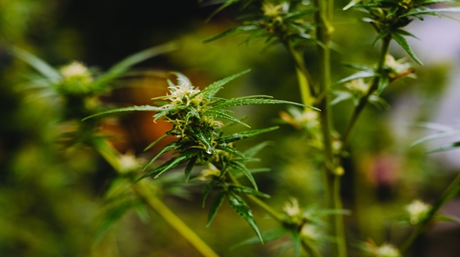
This article will provide you with reliable information on how to grow cannabis indoors. Once you have decided to start growing this plant, the next step is to find out how to do it. There are several factors to consider before planting cannabis, such as the ideal environment, the flowering stages of the plant, and the time it will take to mature. Although it may seem like it takes a lot of energy, you will reap a great reward in the end.
The Botanical Aspect of Cannabis
First, let’s examine the botanical aspect of cannabis that will make you a successful grower. The marijuana plant is often referred to as a dioecious annual. “Annual” means it survives only one season, and “dioecious” means it has both male and female plants. Male plants are responsible for producing pollen, while female plants produce seeds. Therefore, you need both plants as a bonus to ensure you have seeds for the next planting season.
Five Requirements for Cannabis Plants
In order for cannabis plants to thrive, they need at least five main requirements. Below we’ll explore these main requirements. Take a look at these essentials:
1. heat
The optimal temperature should be between 24 and 30 degrees Celsius. Any temperature above 32 degrees Celsius can reduce the growth of the main compound, commonly known as tetrahydrocannabinol (THC). However, some cannabis strains are adapted to extreme temperatures. For example, Sativa adapts to intense heat, while Indica adapts to cold temperatures.
2. Light
Cannabis requires light to process chlorophyll due to its photosensitive nature. Light is also an important factor in the flowering stages of cannabis; processes begin when the ratio of light to dark is 12 hours each. In addition, light control is an important requirement in cannabis cultivation.
3. Water
Water is an important requirement. However, be aware that tap water containing chlorine can damage cannabis plants. Therefore, it is recommended to let the water stand in a container for a short period of time to allow the chlorine to evaporate completely before using it on the cannabis plants.
4. Nutrients
Cannabis requires a variety of nutrients for proper growth. It needs nitrogen in the early stages, while it needs phosphorus in the later stages of flowering. However, the most important requirement is a constant supply of nutrients.
5. Air circulation
It is difficult to control air movement in a room, but with proper air circulation you will enjoy stable levels of carbon dioxide, humidity and temperature. Make sure you have well distributed fans in your room if you plan on moving air. This setup will ensure that the atmosphere in the room is stable and the carbon dioxide and humidity levels are maintained.
The basic stages of the cannabis life cycle
The first stage of growth is sprouting. This stage is mainly facilitated by humidity and heat. It takes approximately 12 hours to 9 days for the embryo to open and produce roots. The root becomes fixed in the soil and a new seedling emerges from the surface. Eventually the leaves open to receive sunlight.
The second stage is the seedling stage. During this stage, the second pair of leaves appears. It can last from 1 week to 4 weeks. The third stage is the vegetative stage; at this stage, the plant can easily absorb light and nutrients. Eventually, the lower leaves fall off.
The other stage is the pre-flowering stage; during this stage, the plant begins to produce nodes (intersections of branches and stems). From these nodes, the plant produces small buds called calyxes. The calyxes then develop into female or male flowers. This stage lasts 10 to 14 days, during which time the plant stretches and can double in size. The pre-flowering stage is also known as the elongation stage. The final stages are the most important and are commonly referred to as the flowering stages of cannabis.
The flowering stages of cannabis
This is the time when the plant begins to produce flowers, which are then harvested, dried and smoked. When the plant is exposed to long hours of darkness, the flowering stages of cannabis begin. The plant stops growing in height and instead channels more energy into the flowering stages of cannabis. When cannabis is grown outdoors, flowering occurs in late summer when the days are shorter. If the plant is grown indoors, the flowering stages of cannabis begin when the lights are switched to 10 to 12 hours of darkness.
For most cannabis strains, the flowering stages of cannabis occur between 7 and 9 weeks, although some strains may take longer to mature. So don’t expect all plants to follow a specific schedule. The stages of cannabis flowering are described below.
1st week
During the first week the plant does not stop growing immediately and goes through considerable stretching. In some strains the plant may double in height. The plant also develops more leaves and becomes more robust. Now that the plant has entered the flowering stage of cannabis, it will require additional nutrients and you will need to bend the stems from the center to form an even canopy for best results.
Week 2
During the second week you are likely to see white pistils on female cannabis plants. The pistils develop where the leaves meet the stems and then develop into buds.
This guide provides you with reliable information that will enable you to grow the plant indoors. Once you have resolved to grow cannabis, the next step is to find out how it is done. There are various factors you need to put into consideration before you plant cannabis, for example, what is the ideal environment, what are the stages of cannabis flowering, and how long does the plant take to mature? Though this sounds like it will consume a lot of energy, you will reap a huge harvest.
The botanic aspect of cannabis
Subsequently, we will look at the botanic aspect of cannabis that will make you a successful grower. The marijuana plant is often referred to as an annual, dioecious herb. Annual meaning it only survives in one season and dioecious meaning it has both female and male plants. The male plants are responsible for producing pollen while the female plants produce seeds; thus, you need the two plants as a bonus to ensure you will have seeds for the next planting season.
Five requirements for cannabis plants
For cannabis plants to thrive, they need at least five main requirements. The following sections explore those requirements. Take a look at these main requirements:
1. Warmth
The most favorable temperature range should be from 24 to 30 degrees Celsius. Any temperature above 32 degrees Celsius can decrease the main compound growth, commonly known as Tetrahydrocannabinol (THC). Nonetheless, some cannabis plant compounds are suited for extreme temperatures. For instance, Sativa is adapted to high heat, while Indica is adapted to cold temperatures.
2. Light
Cannabis requires light to process chlorophyll due to its photosensitive nature. Light is also a major factor in the stages of cannabis flowering; the processes begin when the day length ratio is 12 hours light and 12 hours dark. Also, controlling light is a major requirement in growing cannabis.
3. Water
Water is an important requirement. However, the plants can be damaged by tap water that contains chlorine. Therefore, it is recommended that you let water sit in a container for a short period to let the chlorine profoundly evaporate before using it on cannabis plants.
4. Nutrients
Cannabis requires a spectrum of nutrients for proper growth. It requires nitrogen at the early stage, while in the later cannabis flowering stages, it requires phosphorous. Nevertheless, the most important requirement is providing a constant supply of nutrients.
5. Airflow
It is difficult to control air movement in a room, but with proper airflow, you will enjoy stable CO2, humidity, and temperature. Make sure you have ventilators well-spaced out in your room if you are planning to move air around. This setup will ensure that the atmosphere in the room is stable and the carbon dioxide ratios and humidity are.
The basic stages in a cannabis life cycle
The first stage of growth is germination. This stage is mainly facilitated by moisture and warmth. The embryo takes approximately 12 hours to 9 days to open up and produce roots. The root is then fixed in the soil, and a new seedling is pushed out of the soil surface. Eventually, leaves open up to receive sunlight.
The second stage is the seedling stage. During this stage, the second pair of leaves emerge. It can last for a period between 1 week to 4 weeks. The third stage is the vegetative stage; at this stage, the plant can easily absorb light and nutrients. At some point, the lower leaves drop off.
The other stage is the pre-flowering stage; during this stage, the plant begins to produce nodes (intersection points for branches and stems). From these nodes, the plant grows tiny buds known as calyxes. The calyxes later form either female or male flowers. The stage lasts for a period of 10 days to 14 days; during this period, the plant stretches and may double in size. The pre-flowering period can also be referred to as the stretch. The final stages are the most important and are commonly referred to as the cannabis flowering stages.
The stages of cannabis flowering
This is the period when the plant begins to produce flowers, which are later harvested, dried, and smoked. When the plant is subjected to long hours of darkness, the stages of flowering cannabis begin. The plant stops growing in height and instead puts more energy into the stages of flowering cannabis. If the cannabis is grown outside, flowering happens at the end of summer when the days are shorter. If the plant grows indoors, the cannabis flowering stages begin once the lights are switched to 10 to 12 hours of darkness.
In most cannabis strains, the cannabis flowering stages occur between 7 to 9 weeks, though some strains take longer to mature. Thus don’t expect all plants to follow a particular schedule. Below are the stages of flowering cannabis.
Week 1
During the first week, the plant doesn’t stop growing immediately and moves into the cannabis flowering stages; it goes through a considerable growth stretch. In some strains, the plant doubles in height. Further, the plant grows several leaves and becomes sturdier. Now that the plant has entered the cannabis flowering stages, it will require additional nutrients, and you are required to give it growing nutrients for an additional week. You are also required to bend the stems from the center to form an even canopy that will enable you to attain better results.
Week 2
During the second week, you are likely to spot white pistils on female cannabis. The pistils develop in locations where the leaves meet the stems; they later form buds. If the plant is male, it doesn’t grow hairs but instead grows pollen sacs. At this stage, you are required to contact your nutrient schedule. At two weeks, you increase the nutrients of your plant to enable them to attain its maximum potential.
Week 3
During the third week, the cannabis plant is still growing in size and is 50% larger than 3 weeks earlier. However, the stretch gradually slows down and comes to a halt. You will begin to spot some real buds developing. The resins have not yet developed on the plant, and hence the smell will not be very pungent.
It is worth it noting that during the cannabis flowering stages, your plant begins to spend more energy on growing flowers and thus requires the right dosage of nutrients. After the first three stages of flowering cannabis, the plant becomes picky and can suffer from deficiencies such as the yellowing of leaves or suffer from overfeeding.
Week 4
At this stage, the plant has stopped growing and is spending more energy on buds’ growth. With larger buds, growing the plant produces trichomes; the odor thus becomes noticeable at this phase. You may also consider holding up the previously bent branches before.
Week 5
During week 5, the buds become thicker; you will also spot buds growing in new places. With the buds thriving, the cannabis gets fatter each day. This is the climax of the cannabis flowering stages. Already, the plant has an intense smell. After the five cannabis flowering stages, it is important to install a good ventilation system, especially if you grow the plant indoors.
Week 6 to 8
The cannabis plant will be ready for harvest before week 8. The harvest period should not exceed one week; after this period, the tetrahydrocannabinol will degrade into Cannabinol, which leads to a sleepy feeling. At week six, the pistils start changing color from white to orange. This is a signal that the plant is no longer producing new buds anymore, and it is time to harvest.
The trichomes also turn from being clear to being milky as the THC increases. The color later changes to amber as it degrades to CBN. The two phases may overlap; however, growers believe that the plant has achieved its full potency level when at least 20% of the trichomes turn amber, and the rest can remain milky.
At this point, the grower should be careful with the plants. They are very sensitive to the environment; for instance, without proper airflow, moisture may be trapped in the plant, leading to buds’ growth that eventually destroys the environment.
Flushing the cannabis plant
You are advised to flush the plant during the last stages of flowering cannabis; this is approximately two weeks before harvesting. So what exactly is flushing? You stop giving your plants any nutrients by the process. This process enables the plant to extract necessary nutrients such as nitrogen from the leaves to continue living. Flushing is very productive; nutrients need to be removed from the plant, leaving space for the production of cannabinoids.
How to check if the plants are ready for harvest
To check if the plant is ready for harvest, the farmer should use a microscope or a loupe to check the trichomes. If the trichomes are transparent, then it’s too early to harvest. However, if the trichomes are opaque, the plant is ready for harvest.
A cannabis exception: autoflowering plants
It is incredibly important to also note that we also have autoflowering cannabis plants. Their cannabis flowering stages do not necessarily depend on light or darkness; instead, they bloom depending on the amount of growing time. Autoflowering plants can flower even when subjected to higher amounts of light; you can subject them to 18 hours of light if you want. The Autofloweing plants take a period of between 4 to 6 weeks before they begin the stages of cannabis flowering and can finish the entire cycle in only 10 weeks. Nevertheless, some strains may take a longer period.
How important is 12/12
Most people who get bad results from the cannabis plant have never heard of the 12/12 concept. Nonetheless, it is an easy concept, and we have explained it to you.
Cannabis grows outdoors during April, October, and November; this means that the plant will be flowering from September to October. It is during this very period; the nights get longer while the days get shorter. During this period, the plant is subjected to 12 hours of light and a similar 12 hours of darkness. The 12/12 period naturally stimulates the stages of cannabis flowering. As the 12/12 period continues, the numbers of flowers increase and become large.
12/12 is a part of the cannabis evolution. As a grower, if you are looking to achieve great results, then you must subject the cannabis plant to the 12/12 cycle. Therefore, we must ensure that lights are turned on and off according to the ratios. To facilitate this process, you can use a timer. During the 12 hours of darkness, ensure that the growing area is dark enough. In case any light penetrates the darkroom, then your plants will be delayed in the stages of flowering cannabis. This means that the room should be sealed completely to a point where no beam of light can penetrate the room.
If you are looking forward to setting up a cold room, we recommend that you read more about photography dark rooms. Photographers are known to use light-tight rooms while filming. If you can copy such ideas (black screening on all doorframes and light points), then you will have the best environment for the stages of cannabis flowering.
Nevertheless, 12/12 can be disastrous if adopted earlier than the pre-flowering stage; it may lead to abnormal growth. Most people refer to abnormal growth as “early flowering” (this is, however, not early flowering; the ‘early flowering’ stage does not exist. The plant is only triggered to a situation where it believes that it has no production chances; the condition is known as ‘self-pollination.’
During ‘self-pollination,’ the plant produces both female and male flowers on a single plant. The male pollinates the female flower, leading to the production of seeds. What triggers ‘self-pollination’? The plant realizes that the photoperiod is not regular and also realizes that it should not be in the vegetative stage but the stages of cannabis flowering. The plant tries to move to the stages of cannabis flowering in an attempt to receive pollen grains because it feels like it has already missed the chance (wild males are known to release pollen at the same time as females begin to flower or even before that).
Is cannabis useful?
Growing up, most would-be connoisseurs were made to believe that cannabis is a threat to humanity. However, we believe it is high time to rise above such misconceptions. Cannabis is among the world’s most useful plants; it is used in different industries, from the petroleum industry to the pharmaceutical industry. Besides, cannabis products are easily biodegradable and decompose easily without causing harm to the environment.
Cannabis is also widely used for medicinal purposes. It is believed that cannabis can be used to treat over 100 diseases. In addition, some national organizations such as the New England journal of medicine support access to cannabis. Medical studies and reports influence this support. For instance, research conducted in Israel in 1966 concluded that cannabis could be used to treat epilepsy, and glaucoma, reduce tumors, and also control nausea during chemotherapy. Cannabis can also be used to treat asthma and also treat Alzheimer’s disease. Indeed, cannabis is a gift to humanity!
Nonetheless, this fact has been greatly suppressed by the government and other agencies that portray cannabis as a negative plant. Millions of dollars have been cashed to organizations that dehumanize cannabis. It is believed that this funding is from alcohol manufacturing companies that fear increased adoption of cannabis may greatly reduce sales. Besides, it is amazingly interesting to note that the public is greatly adopting the use of cannabis, and soon the negative narrative will change.
Frequently asked questions about the cannabis flowering stages
Q: What does the term stretch mean?
A: The term stretch refers to the journey taken by the cannabis plant once the darkness period begins to increase. At this stage, plants push and stretch up as high as possible to deliver high-grade flowers. This is, however, dependent on the strain you are working with; for the Indica variety, the cannabis stretches approximately 100% of its normal size. On the converse, we have the Sativa strain that stretches too far as it reaches for the stars. It is a notorious plant and needs to be controlled.
Q: Should the grower prune the plants throughout the cannabis flowering stages?
A: Yes, this is a requirement. Imagine what irrelevant branches sprouting everywhere would do to the plant. They would cause the plant unnecessary stress. To ensure that all the energy is used in leaf and flower production, pruning is a must. Also, pruning ensures that the airflow at the bottom is at its maximum and also prevents pests from attacking the plant.
Q: Are enzymes a requirement in the cannabis flowering stages?
A: Cannabis growers may underrate the power of enzymes; however, they play an important role. Just like in the human body, enzymes break down food in plants. When combined with other flowering nutrients, they accelerate the plants’ metabolism.
Q: Is it advisable for the grower to withdraw nitrogen nutrients from the plant during the cannabis flowering stages?
A: The plant grows new branches and leaves during the flowering stage as compared to the vegetative stage. Therefore, many companies advise farmers to ensure a constant supply of nitrogen throughout the entire period. Organic growers are advised to use blood meal and humus to ensure that the plant is charged during the entire flowering cycle.
Q: What ratio of P And K do plants require during the cannabis flowering stages?
A: Over the years, the most commonly used ratio is 0-13-14. However, other organic companies such as Biobizz offer a lower ratio while hydroponic companies offer higher ratios of 0-50-30. The trick is acquiring the best results and following your feeding chart.
Q: Are the stages of flowering cannabis rewarding?
A: As outlined above, the stages of flowering cannabis are rewarding; if the grower understands the process, he is likely to gain a lot from it. You can see that we have 6 distinct stages; every stage has its requirements. With proper supervision, each of the above stages places you on a path of harvesting a high yield.
Nonetheless, this article is a general guide. The grower is required to twist the process based on the specific strain you are growing. However, all cannabis strains eventually grow through all the stages, including the autoflowering strains. They all get to the flowering stage but must be triggered by the genetic code.
Final thoughts
In conclusion, the most important stage of cannabis growing is the flowering stage. It is at this stage that we notice the buds developing and also feel the delicious ‘smell’ we have been waiting for. Unlike other stages, you also need to be careful with the stages of flowering cannabis to avoid attracting nosy neighbors. It is relatively straightforward to take care of a cannabis plant, keep it healthy, and you will enjoy it more when the time to smoke arrives.
It was a pleasure sharing my knowledge with you, and I would be delighted if you use cannabis for good purposes. At this very time, we strongly caution against excess usage of the drug. Similar to other enjoyable things, recurrent usage can lead to a habit. A cannabis habit can be very detrimental to personal growth and can also mess up your life goals. If cannabis usage becomes a habit for you, just moderate or stop using the drug for some time until the craving is gone. However, always remember that when cannabis is used with good intentions, the rewards always follow.
You may like
-


Buddha Chief raises vibrations at new Housing Works dispensary in NoMad
-


3 best THCA vape carts of 2025 by Leafly
-


From client to co-founder, Storz & Bickel executive on US tour to drum up cannabis business
-


UNDERSTANDING CANNABIS AND CANNABINOIDS (THC and CBD)
-


High Stakes and High Demand: Will Las Vegas Finally Allow Cannabis Near Casinos?
-


Cannabis Tourism in 2025: Destinations, Trends, and Tips
Cannabis
Cannabis And Co2 – How To Increase Your Yield
Published
2 months agoon
December 27, 2024By
admin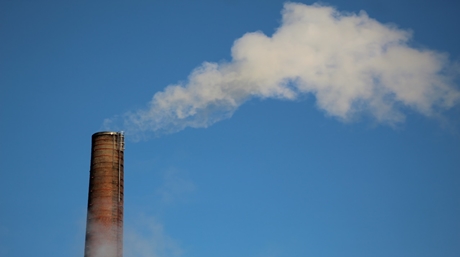
Discover Cannabis and CO2
Did you know that your plants can be harmed if they don’t get an adequate supply of CO2? Or that an excessive supply of carbon dioxide can potentially be harmful to your marijuana plants? Carbon dioxide is a crucial aspect of marijuana cultivation that can hinder or permanently halt the progress of plant growth. When it comes to supplying your plants with additional carbon dioxide, there are certain factors you need to keep in mind. In this piece “Cannabis and CO2” we will share ways to optimize CO2 levels for cannabis growth.

Why is carbon dioxide essential for cannabis cultivation?
It is essential to ensure that your plants receive a carbon dioxide level above 250 parts per million (ppm). Any CO2 level below this measure can pose immense risk to them. On the other hand, exposing your plants to dangerously high levels of carbon dioxide can be lethal. But why is carbon dioxide essential for cannabis cultivation? It enables plants to complete the process of photosynthesis. Photosynthesis is the conversion of carbon dioxide into energy in plants. As the name and formula imply, CO2 consists of one carbon atom and two oxygen atoms. This is significant because plants require 17 essential elements to grow and reproduce, and hydrogen, carbon, and oxygen make up 95% of a plant’s dry weight.
Many farmers suggest that adding CO2 to the cultivation room could improve yields by up to 20%. However, this guide will show you how to optimize carbon dioxide levels for better weed growth and excellent results.
How to introduce additional CO2 to your garden
There are several methods to add carbon dioxide to your garden. However, many of these methods do not guarantee controlled delivery of the desired PPM. Therefore, we recommend investing in reliable equipment to ensure proper CO2 supplementation.
CO2 generators
CO2 generators offer an effective way to improve the carbon dioxide levels in your plants. These products, resembling outdoor heaters, burn propane or natural gas to produce carbon dioxide. They also emit heat, making them suitable for larger spaces and climate-controlled enclosures.
Compressed CO2
Compressed CO2, stored in metal tanks like propane cylinders or scuba tanks, can be delivered to your plants through emitters. Unlike generating carbon dioxide on your own, compressed carbon dioxide is produced at a factory, eliminating concerns about heat generation. This makes compressed CO2 an excellent choice for small-scale growers.
What does carbon dioxide do for your cannabis plants?
Optimizing carbon dioxide levels for your plants will result in increased growth speed and higher yields. With accelerated growth, you can enjoy bountiful harvests every year, resulting in bigger and better yields without experiencing dry periods. When carbon dioxide is used properly, it increases the moisture content in your plants and enhances their resilience. This enables plants to withstand higher temperatures than they normally would without drying out quickly. As a result, your plants will thrive in hotter conditions, leading to improved growth.

Why use CO2 in cannabis cultivation?
There are two primary benefits of using CO2 in your marijuana plants: faster growth and greater yield. Additionally, plants store a certain amount of moisture and energy in their leaves, and carbon dioxide helps release that energy, allowing plants to blossom. Most cultivators agree that unlocking this stored energy can lead to a 20-30% increase in yield, along with a relative growth speed increase of at least 15%.
What do you need to know before adding CO2 to your cannabis plants?
Adding CO2 will increase the humidity of your cannabis garden, creating a more moist environment. However, higher moisture levels can also increase the risk of fungus and rot. Moreover, uncontrolled release of carbon dioxide can create a toxic environment for both your cannabis plants and yourself. A CO2 level of about 2000 ppm can harm your plants, and levels higher than that can be unsafe for animals and humans to breathe. It’s important to remember that a quantity below 250 ppm will harm your plants.
Since carbon dioxide is heavier than oxygen, it needs to rain down on your plants. Therefore, it’s necessary to regulate carbon dioxide levels to maximize its benefits without sacrificing the oxygen your plants require, and vice versa. In a nutshell, carbon dioxide supplementation will lead to bigger, improved, and higher annual yields.
autoflower seeds
How To Germinate Cannabis Seeds In Different Mediums
Published
5 months agoon
October 7, 2024By
admin
Germinating is the beginning of life for your cannabis plant, and it is essential to understand how it works.
This guide will discuss the different ways of germinating your marijuana seeds and some strategies to help you achieve the best results.
Why You Need to Germinate Cannabis Seeds Before Planting
Many different plants can germinate in the ground. However, cannabis seedlings can be fragile. Because of this, weed seeds should be germinated separately before planting. Immediately after the seeds have sprouted, they should be planted in a hydroponic setup, a soilless medium, or the soil.
During the planting process, you should ensure that the seeds are 2.5 cm (1 Inch) deep in whichever medium you choose and covered lightly.
After planting, you should wait one week for the seedling to start emerging from the soil. If the seed poked through the soil by the tenth day, it likely didn’t survive.
When to Germinate Your Cannabis Seeds
We recommend that you germinate your cannabis seeds when the hours of sunlight are long enough to allow for healthy growth.
In short, we recommend germinating your seeds in the spring when it is getting warmer and when the sun won’t disappear for long periods. You don’t need to follow a fixed calendar, although it can help. Instead, you can look outside your house and see when other plants are starting to sprout. Just make sure that good growing weather will be present for some time. Your plants should be getting about 12 hours of sunlight each day. You can help with this by making sure they have southern exposure.
This means ensuring your plants have access to the sky facing south. Now that we have a solid foundation of where to start let’s learn how to germinate your cannabis seeds.
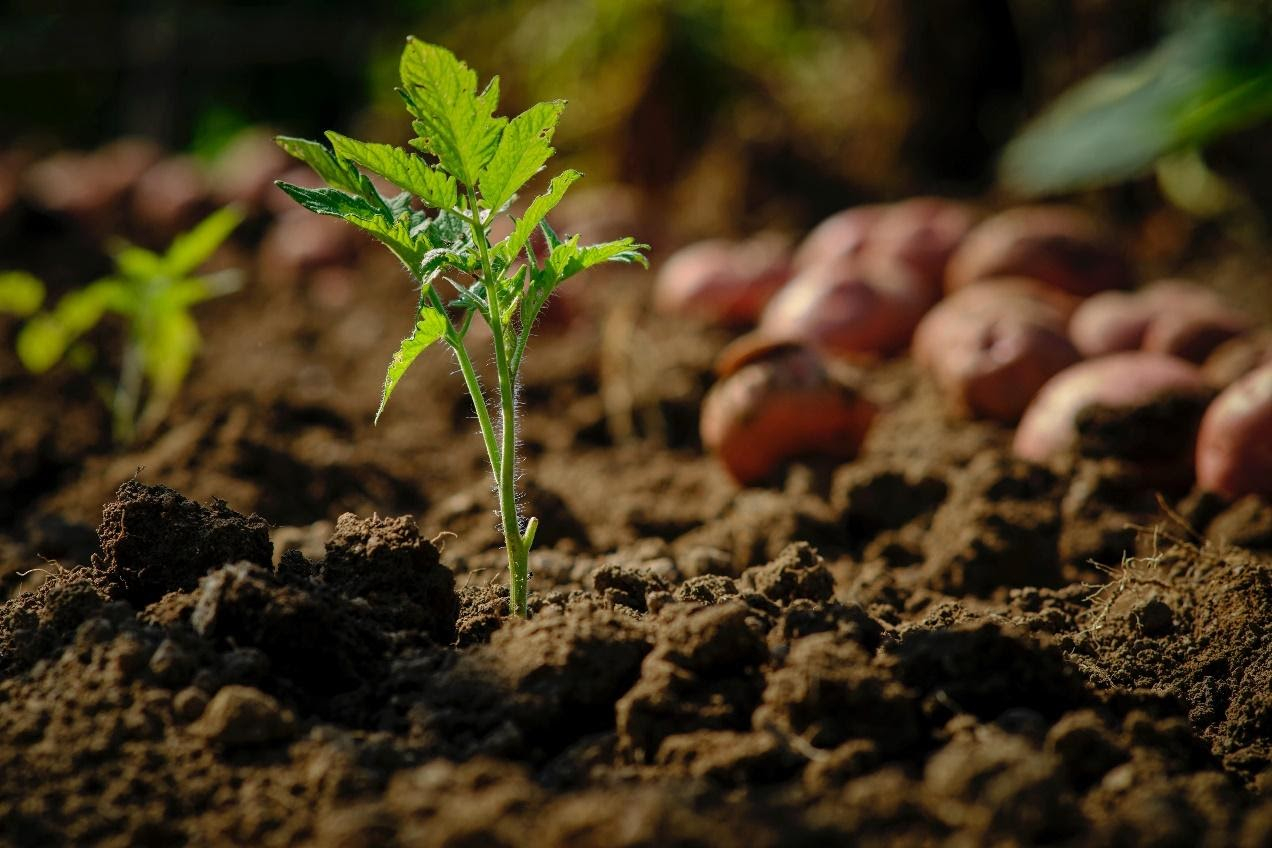
How to Germinate Your Cannabis Seeds
Before we highlight the different methods of germinating marijuana, we need to understand what conditions the seeds need to germinate. The conditions include the following:
· Moisture – You need to ensure that the seeds are moist. You can soak cannabis seeds for between 20-30 hours. Do not oversoak them.
· Provide Peace– Don’t disturb the seeds; wait for the taproot to show up.
· Warmth– To assist with germination, keep the seeds warm. Make sure the environment is not too hot. Seeds can germinate in cooler temperatures, but the process takes a long time when it’s cold. You want to shoot between 20 to 25°C (68 to 77°F).
· Be Gentle– Be careful when taking care of the seeds; treat them gently as you move them. If possible, avoid touching the white root; this is the taproot and is fragile. It can easily snap off.
· Plant with the Pointed End Up– Make sure the pointed end is facing up when planting the seeds. This will ensure that the seedling does not waste energy trying to reorient itself.
· Plant About a Knuckle Deep – Don’t put the seeds too deep in the soil. You can place the seed about an inch under the soil’s surface.
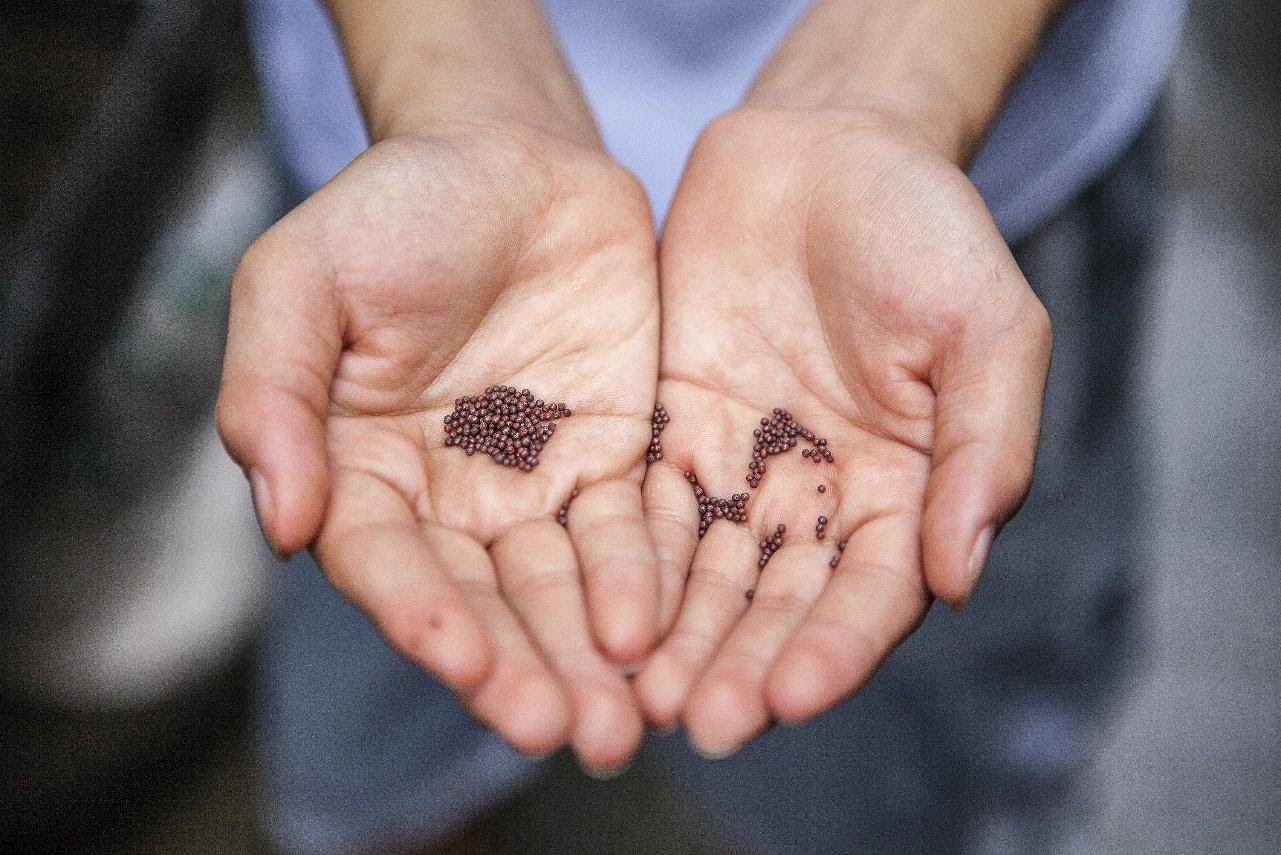
Different Methods of Germinating Cannabis Seeds
The best germination method depends on the choice of the cultivator. Below are some of the common ways to germinate your cannabis seeds.
Germinating Cannabis Seeds in the Soil
Perhaps the easiest way to germinate cannabis seeds. The soil acts as a protective barrier for the seeds. It is also good at retaining moisture. What steps should you take to germinate seeds in soil?
Step 1: Ensure You Use the Correct Soil Type – This is the first step. The soil should either be gently fertilized or a seed starter with a pH level of 6.
The soil should also contain enough nutrients and the right acidity to strengthen the young plants during the first two weeks. After that, refrain from adding more nutrients to the soil unless there is an absolute need. After that, you can cause your plant to go into the nutrient lock.
Step 2: Place the Soil in a Container and Use a Pencil to Create a Small Hole – Once the soil is in the pot, you can use a pencil to create a hole that is half an inch to an inch deep. Once the seed is in the soil, bury it in the soil. After this stage, please do not touch the seed because it is very fragile.
Step 3: Water the Soil – Carefully water the soil with a spray bottle and place your pots under a fluorescent lamp. Keep your seeds away from a window. The temperature swings that happen at a window can interfere with germination. You must ensure the temperature range is between 20 to 25°C (68 to 77°F).
Ensure that you monitor the soil daily to ensure that it is moist. After 4 to 7 days, small stems should be sprouting through the soil.
Once the seedling grows to 5 to 10 cm (2 to 4 inches) height, you can now transplant the cannabis to a larger pot with more room for the roots to spread out. This indicates that you have successfully germinated the seeds into young plants.
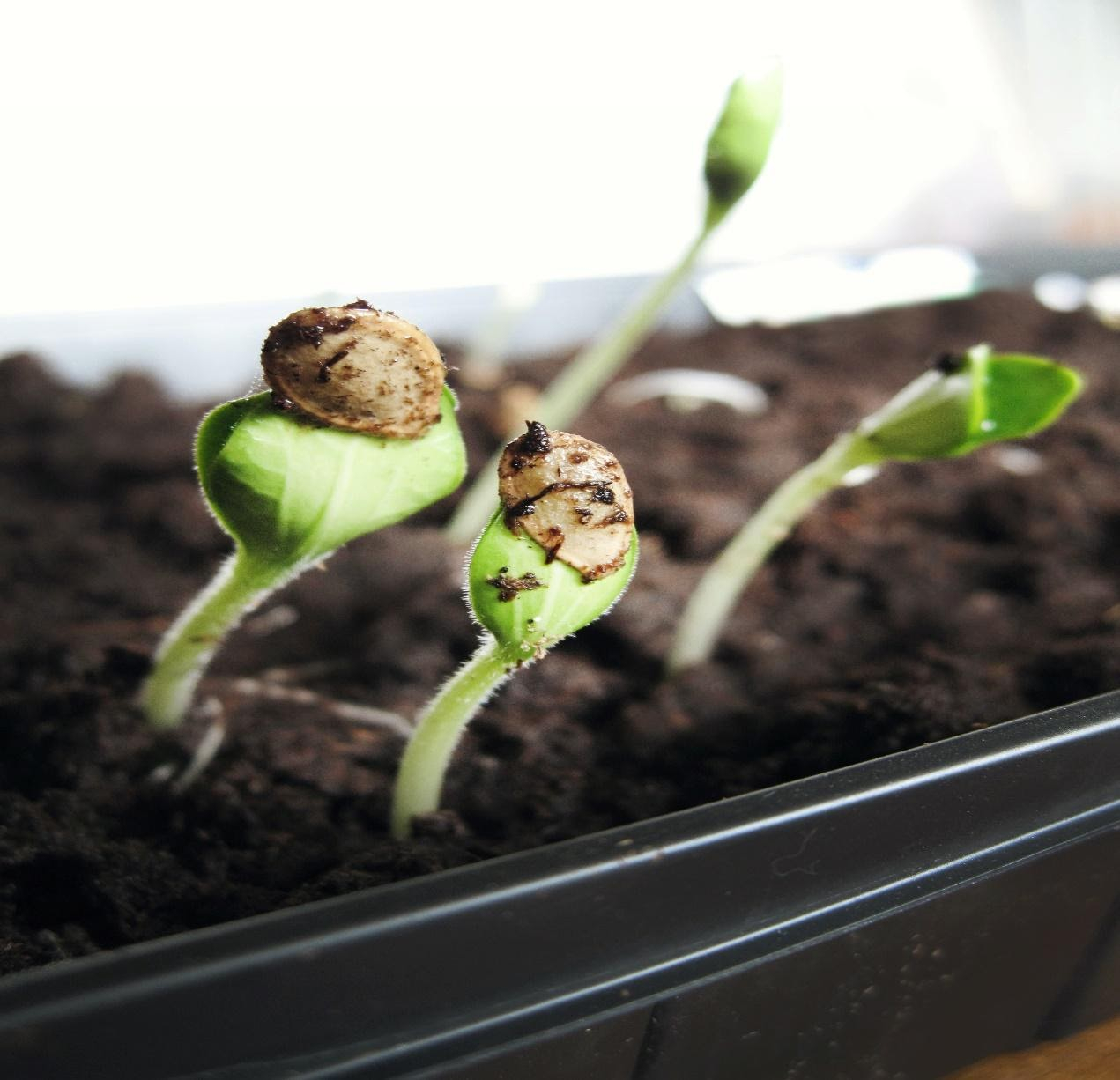
Germinating Cannabis Seeds in Water
Germinating cannabis seeds in water is popular because it is faster. All you need to do is place your seeds in water and make adjustments as necessary.
As we stated earlier, germinating seeds require a balanced and ideal growing condition. For example, many water germinations require only 24 to 48 hours to ensure that the stems pop out of the seeds. However, some seeds can be soaked for up to a week.
Water germination can be fast because the seeds have all the water they need readily available. This allows the shell to be softened and to crack easily.
What do you need to do to germinate seeds in water?
Step 1: Fill a Glass with Tap Water and Leave It to Come to Room Temperature – Once you fill a glass with tap water, you should leave it in a warm room until it attains a temperature of at least 65 degrees Fahrenheit.
Step 2: Add Seeds to the Glass – Add 2 or 3 seeds to the glass and allow them to settle for some time. Then watch the glass for any changes. You can change the water to freshwater after every two days, but always make sure that it is at room temperature.
The seeds may start sprouting after two days, though some old seeds may take a week to sprout.
Step 3: Remove the Seeds from the Water – Once the seeds have sprouted, remove them from the glass and place them in the soil.
The only disadvantage with water germination is that you must be very careful when moving the sprouted seeds. This process is very delicate since the seeds are fragile. If you harm the seeds, you can kill the plant.
Germinating Seeds on Paper Towels
Germinating marijuana seeds on paper towels is a common way to sprout cannabis seeds. In some cases, the grower will use a cotton pad instead. The methods for germination using paper towels and cotton padding are very similar.
Step 1: Lay the Paper Towels on a Flat Surface – To germinate seeds using paper towels, you should lay paper towels on a countertop, then place some seeds on them. Next, cover the seeds using another towel.
Step 2: Moisten the Towels – Use a spray bottle to moisten the towels. Place the paper towels and seeds on a plate or in a bowl. Then cover the seeds with a face-down bowl or plate. Alternatively, you can place them in a plastic bag to ensure they are secure.
Step 3: Maintain the Temperature – Ensure room temperature is between 20 to 25°C (68 to 77°F). You will want to maintain this temperature. Also, you should wrap the seeds and place them in a dark place. You will want to keep the seeds away from direct wind and sunlight. Within 2-5 days, the seeds should start to show tiny roots. You can plant them when they reach about 5 millimeters (0.2 Inch) in length.
The paper towel method has some risks. This is because the seedlings might be destroyed during the unwrapping and potting stage. Also, the roots can become entangled in the towel and the roots of other seeds. So make sure you relocate the seeds before their roots get too long.
You can use your hands or some tweezers to move the seeds and place them in your medium of choice.
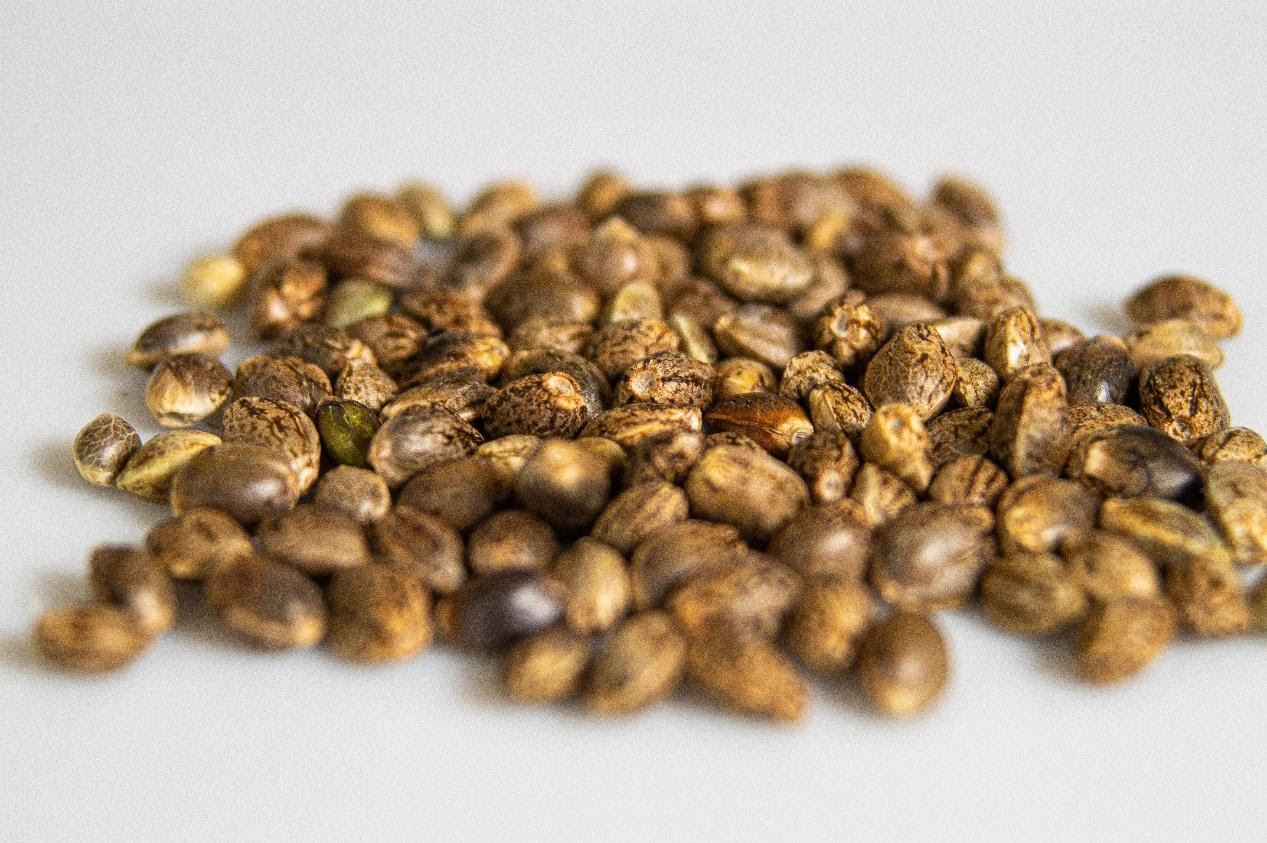
Other Popular Germination Methods
The abovementioned methods are some of the most popular ways of germinating marijuana seeds. However, they are not the only ways. For example, you can always use starter plugs or cubes.
These methods are straightforward. All you have to do is to put a seed into or onto the growing medium. Once you do this, add some water. Then you need to wait. After that, the seeds should begin to germinate. Just keep an eye that they don’t dry out.
These methods protect the plants from damage, mainly when transported to their final homes. However, as usual, you should exercise caution when using these methods.
Germinating Cannabis Seeds in Peat Pellets
This is a method of germinating seeds that will help to mitigate damage to the young roots. Peat pellets are made of decomposed vegetable matter. These pellets contain nutrients that the seedlings need to develop correctly. The pellets enlarge when you add water to them, forming a nutrient-rich container.
The peat pellets are optimized with a pH of 5.5. Therefore, you shouldn’t need to worry about any adjustments. However, remember to soak the pellets in warm water to prepare them for the seeds.
Once the roots appear, move the whole pellet into the medium, where it will continue growing. This method is not recommended for hydroponic setups. However, peat pellets are suitable for germination and can be used by beginners. They can also be used in cloning.
Planting the Germinated Cannabis Seeds
After the seeds have sprouted, they should be planted in the most suitable medium.
If you use a germination process that requires moving the sprouts, do so with a lot of care since the roots are very fragile. You don’t want to touch the root, or you can break it. The root may sustain this, but it can seriously hamper your plant’s growth. It can also send the plant into shock, which it may never recover from. It should also be placed half an inch to an inch deep in the growing medium. After positioning the germinated seed, cover it lightly and make sure the soil is moist. After one week, the seedling should emerge through the soil.
Some seeds emerge in a day or two, while others can take up to 10 days. If the waiting period exceeds ten days, your seed may not have survived.
If your seed is planted upside down, don’t panic, nature has a way of working things out. As long as you have not crowded the seedling, it should be able to correct itself. Give it some time and space and allow it to do this.
Cannabis Seeds versus Clones
For typical home growers, it is easier to obtain cannabis seeds than clones. Also, growing seeds produce more vigorous plants acclimated to the climate they are growing in.
Marijuana plants grown from seed are usually stronger than plants grown from clones. This is because they develop strong taproots. In cooler climates, you can plant your seeds directly in your garden. After the last frost, you will want to do this in mid to late spring.
It is better to germinate your seeds indoors if you grow them outside. This will allow the seeds a more extended germination period and also protect them from the worst of the early spring weather. Moreover, growing the plant indoors will enable the seedling access to plenty of light (primarily if you use a grow lamp). Then, transplant them outside or into an indoor pot when mature enough.
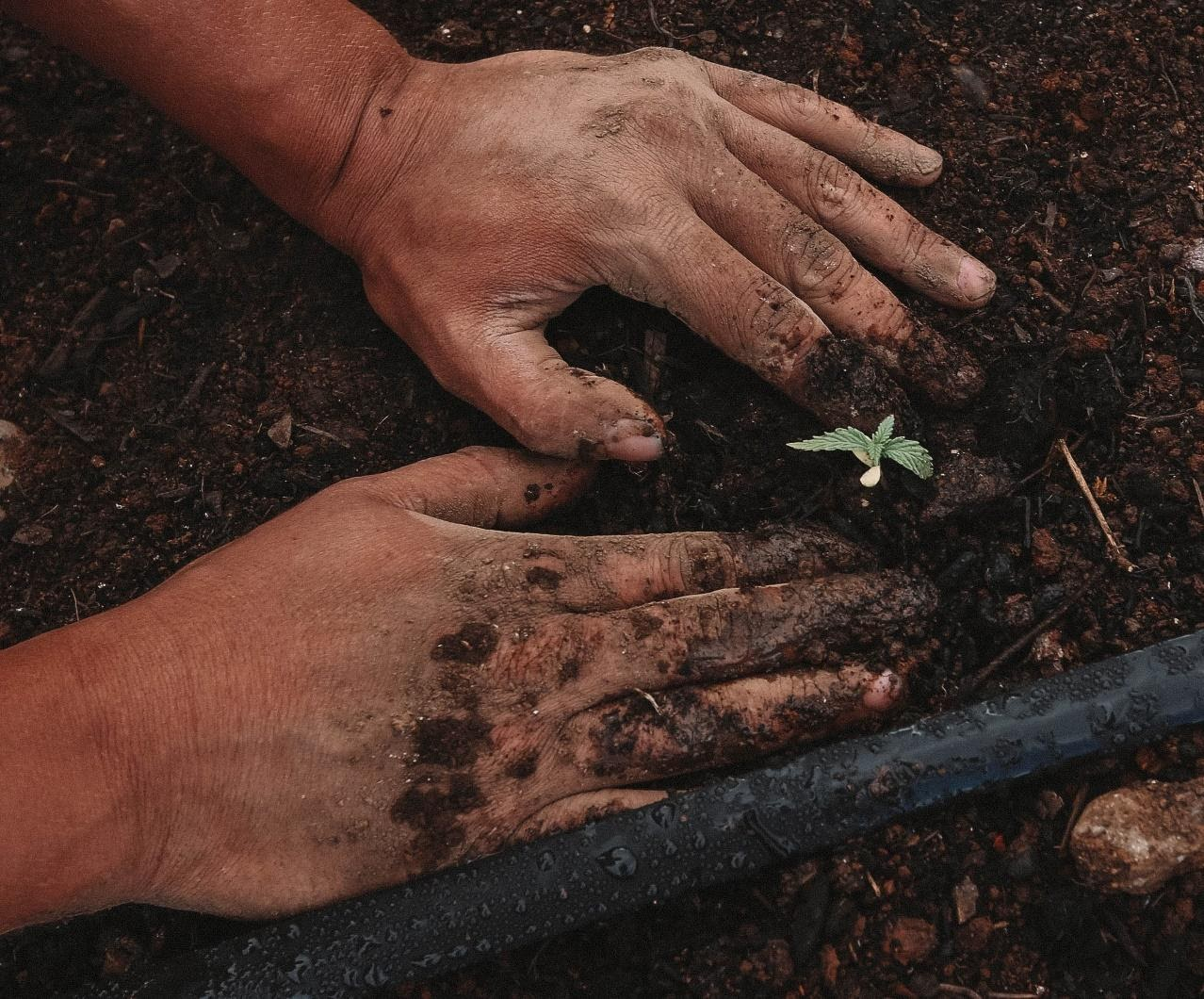
Is Lighting Important for Cannabis Germination?
Just like water, lighting is an essential requirement for germination. Light enables the plant to survive. In addition, it allows for the creation of sugars during photosynthesis. The plant will use these sugars to feed itself as it grows.
Light is also essential to the young plant. It also provides much-needed warmth. The plant will require warmth to help break through the shell and not die from the cold. Fluorescent bulbs with a color temperature of 6500K and a T5 output will help provide the seeds with the correct light.
Fluorescent bulbs are recommended because they take up very little power and don’t produce too much heat. You can adjust the position of the lights so that they are very close to the plants without causing them to suffer any damage. As soon as the first leaves emerge, you will need to ensure that your plants are receiving light.
You can use incandescent bulbs also. They will generate heat. You cannot use incandescent lights to provide the light necessary to grow your plants. However, they can be used to assist in germination.
You can use garden heating mats as an alternative to light as a heat source. These pads heat the seeds from underneath the container you are germinating in. Remember that once the plants start to grow, you will need an alternative heating method. Also, these pads will not produce enough warmth for larger plants.
Keep the soil at around 21 to 22°C (69 to 71°F). Seeds need a specific temperature range to germinate. If the temperature is too cold, they won’t germinate. Likewise, if the temperature is too hot, they won’t germinate.
It is better to have humid air when germinating seeds. Drier air is not that good for your seeds. Also, if the temperature in your germination growth starts to get too high, move the setup away from the lights. If it is too cold, move it towards the lights.
Final Thoughts
Germination is considered one of the most critical stages of cultivating cannabis. You will need to be careful with this stage. We have gone over some germination strategies that will help you achieve the best results possible. We think what works for you is the best way to do something. If you are like me, you prefer to do things most simply and naturally possible. Not just because it is easy but also because it most closely emulates natural growth. But something else may appeal to you. So get out there and see what works for you.
autoflower seeds
How To Germinate Cannabis Seeds In Different Mediums
Published
5 months agoon
October 6, 2024By
admin
Germinating is the beginning of life for your cannabis plant, and it is essential to understand how it works.
This guide will discuss the different ways of germinating your marijuana seeds and some strategies to help you achieve the best results.
Why You Need to Germinate Cannabis Seeds Before Planting
Many different plants can germinate in the ground. However, cannabis seedlings can be fragile. Because of this, weed seeds should be germinated separately before planting. Immediately after the seeds have sprouted, they should be planted in a hydroponic setup, a soilless medium, or the soil.
During the planting process, you should ensure that the seeds are 2.5 cm (1 Inch) deep in whichever medium you choose and covered lightly.
After planting, you should wait one week for the seedling to start emerging from the soil. If the seed poked through the soil by the tenth day, it likely didn’t survive.
When to Germinate Your Cannabis Seeds
We recommend that you germinate your cannabis seeds when the hours of sunlight are long enough to allow for healthy growth.
In short, we recommend germinating your seeds in the spring when it is getting warmer and when the sun won’t disappear for long periods. You don’t need to follow a fixed calendar, although it can help. Instead, you can look outside your house and see when other plants are starting to sprout. Just make sure that good growing weather will be present for some time. Your plants should be getting about 12 hours of sunlight each day. You can help with this by making sure they have southern exposure.
This means ensuring your plants have access to the sky facing south. Now that we have a solid foundation of where to start let’s learn how to germinate your cannabis seeds.

How to Germinate Your Cannabis Seeds
Before we highlight the different methods of germinating marijuana, we need to understand what conditions the seeds need to germinate. The conditions include the following:
· Moisture – You need to ensure that the seeds are moist. You can soak cannabis seeds for between 20-30 hours. Do not oversoak them.
· Provide Peace– Don’t disturb the seeds; wait for the taproot to show up.
· Warmth– To assist with germination, keep the seeds warm. Make sure the environment is not too hot. Seeds can germinate in cooler temperatures, but the process takes a long time when it’s cold. You want to shoot between 20 to 25°C (68 to 77°F).
· Be Gentle– Be careful when taking care of the seeds; treat them gently as you move them. If possible, avoid touching the white root; this is the taproot and is fragile. It can easily snap off.
· Plant with the Pointed End Up– Make sure the pointed end is facing up when planting the seeds. This will ensure that the seedling does not waste energy trying to reorient itself.
· Plant About a Knuckle Deep – Don’t put the seeds too deep in the soil. You can place the seed about an inch under the soil’s surface.

Different Methods of Germinating Cannabis Seeds
The best germination method depends on the choice of the cultivator. Below are some of the common ways to germinate your cannabis seeds.
Germinating Seeds in the Soil
Perhaps the easiest way to germinate cannabis seeds. The soil acts as a protective barrier for the seeds. It is also good at retaining moisture. What steps should you take to germinate seeds in soil?
Step 1: Ensure You Use the Correct Soil Type – This is the first step. The soil should either be gently fertilized or a seed starter with a pH level of 6.
The soil should also contain enough nutrients and the right acidity to strengthen the young plants during the first two weeks. After that, refrain from adding more nutrients to the soil unless there is an absolute need. After that, you can cause your plant to go into the nutrient lock.
Step 2: Place the Soil in a Container and Use a Pencil to Create a Small Hole – Once the soil is in the pot, you can use a pencil to create a hole that is half an inch to an inch deep. Once the seed is in the soil, bury it in the soil. After this stage, please do not touch the seed because it is very fragile.
Step 3: Water the Soil – Carefully water the soil with a spray bottle and place your pots under a fluorescent lamp. Keep your seeds away from a window. The temperature swings that happen at a window can interfere with germination. You must ensure the temperature range is between 20 to 25°C (68 to 77°F).
Ensure that you monitor the soil daily to ensure that it is moist. After 4 to 7 days, small stems should be sprouting through the soil.
Once the seedling grows to 5 to 10 cm (2 to 4 inches) height, you can now transplant the cannabis to a larger pot with more room for the roots to spread out. This indicates that you have successfully germinated the seeds into young plants.

Germinating Seeds in Water
Germinating cannabis seeds in water is popular because it is faster. All you need to do is place your seeds in water and make adjustments as necessary.
As we stated earlier, germinating seeds require a balanced and ideal growing condition. For example, many water germinations require only 24 to 48 hours to ensure that the stems pop out of the seeds. However, some seeds can be soaked for up to a week.
Water germination can be fast because the seeds have all the water they need readily available. This allows the shell to be softened and to crack easily.
What do you need to do to germinate seeds in water?
Step 1: Fill a Glass with Tap Water and Leave It to Come to Room Temperature – Once you fill a glass with tap water, you should leave it in a warm room until it attains a temperature of at least 65 degrees Fahrenheit.
Step 2: Add Seeds to the Glass – Add 2 or 3 seeds to the glass and allow them to settle for some time. Then watch the glass for any changes. You can change the water to freshwater after every two days, but always make sure that it is at room temperature.
The seeds may start sprouting after two days, though some old seeds may take a week to sprout.
Step 3: Remove the Seeds from the Water – Once the seeds have sprouted, remove them from the glass and place them in the soil.
The only disadvantage with water germination is that you must be very careful when moving the sprouted seeds. This process is very delicate since the seeds are fragile. If you harm the seeds, you can kill the plant.
Germinating Seeds on Paper Towels
Germinating marijuana seeds on paper towels is a common way to sprout cannabis seeds. In some cases, the grower will use a cotton pad instead. The methods for germination using paper towels and cotton padding are very similar.
Step 1: Lay the Paper Towels on a Flat Surface – To germinate seeds using paper towels, you should lay paper towels on a countertop, then place some seeds on them. Next, cover the seeds using another towel.
Step 2: Moisten the Towels – Use a spray bottle to moisten the towels. Place the paper towels and seeds on a plate or in a bowl. Then cover the seeds with a face-down bowl or plate. Alternatively, you can place them in a plastic bag to ensure they are secure.
Step 3: Maintain the Temperature – Ensure room temperature is between 20 to 25°C (68 to 77°F). You will want to maintain this temperature. Also, you should wrap the seeds and place them in a dark place. You will want to keep the seeds away from direct wind and sunlight. Within 2-5 days, the seeds should start to show tiny roots. You can plant them when they reach about 5 millimeters (0.2 Inch) in length.
The paper towel method has some risks. This is because the seedlings might be destroyed during the unwrapping and potting stage. Also, the roots can become entangled in the towel and the roots of other seeds. So make sure you relocate the seeds before their roots get too long.
You can use your hands or some tweezers to move the seeds and place them in your medium of choice.

Other Popular Germination Methods
The abovementioned methods are some of the most popular ways of germinating marijuana seeds. However, they are not the only ways. For example, you can always use starter plugs or cubes.
These methods are straightforward. All you have to do is to put a seed into or onto the growing medium. Once you do this, add some water. Then you need to wait. After that, the seeds should begin to germinate. Just keep an eye that they don’t dry out.
These methods protect the plants from damage, mainly when transported to their final homes. However, as usual, you should exercise caution when using these methods.
Germinating Seeds in Peat Pellets
This is a method of germinating seeds that will help to mitigate damage to the young roots. Peat pellets are made of decomposed vegetable matter. These pellets contain nutrients that the seedlings need to develop correctly. The pellets enlarge when you add water to them, forming a nutrient-rich container.
The peat pellets are optimized with a pH of 5.5. Therefore, you shouldn’t need to worry about any adjustments. However, remember to soak the pellets in warm water to prepare them for the seeds.
Once the roots appear, move the whole pellet into the medium, where it will continue growing. This method is not recommended for hydroponic setups. However, peat pellets are suitable for germination and can be used by beginners. They can also be used in cloning.
Planting the Germinated Seeds
After the seeds have sprouted, they should be planted in the most suitable medium.
If you use a germination process that requires moving the sprouts, do so with a lot of care since the roots are very fragile. You don’t want to touch the root, or you can break it. The root may sustain this, but it can seriously hamper your plant’s growth. It can also send the plant into shock, which it may never recover from. It should also be placed half an inch to an inch deep in the growing medium. After positioning the germinated seed, cover it lightly and make sure the soil is moist. After one week, the seedling should emerge through the soil.
Some seeds emerge in a day or two, while others can take up to 10 days. If the waiting period exceeds ten days, your seed may not have survived.
If your seed is planted upside down, don’t panic, nature has a way of working things out. As long as you have not crowded the seedling, it should be able to correct itself. Give it some time and space and allow it to do this.
Cannabis Seeds versus Clones
For typical home growers, it is easier to obtain cannabis seeds than clones. Also, growing seeds produce more vigorous plants acclimated to the climate they are growing in.
Marijuana plants grown from seed are usually stronger than plants grown from clones. This is because they develop strong taproots. In cooler climates, you can plant your seeds directly in your garden. After the last frost, you will want to do this in mid to late spring.
It is better to germinate your seeds indoors if you grow them outside. This will allow the seeds a more extended germination period and also protect them from the worst of the early spring weather. Moreover, growing the plant indoors will enable the seedling access to plenty of light (primarily if you use a grow lamp). Then, transplant them outside or into an indoor pot when mature enough.

Is Lighting Important for Cannabis Germination?
Just like water, lighting is an essential requirement for germination. Light enables the plant to survive. In addition, it allows for the creation of sugars during photosynthesis. The plant will use these sugars to feed itself as it grows.
Light is also essential to the young plant. It also provides much-needed warmth. The plant will require warmth to help break through the shell and not die from the cold. Fluorescent bulbs with a color temperature of 6500K and a T5 output will help provide the seeds with the correct light.
Fluorescent bulbs are recommended because they take up very little power and don’t produce too much heat. You can adjust the position of the lights so that they are very close to the plants without causing them to suffer any damage. As soon as the first leaves emerge, you will need to ensure that your plants are receiving light.
You can use incandescent bulbs also. They will generate heat. You cannot use incandescent lights to provide the light necessary to grow your plants. However, they can be used to assist in germination.
You can use garden heating mats as an alternative to light as a heat source. These pads heat the seeds from underneath the container you are germinating in. Remember that once the plants start to grow, you will need an alternative heating method. Also, these pads will not produce enough warmth for larger plants.
Keep the soil at around 21 to 22°C (69 to 71°F). Seeds need a specific temperature range to germinate. If the temperature is too cold, they won’t germinate. Likewise, if the temperature is too hot, they won’t germinate.
It is better to have humid air when germinating seeds. Drier air is not that good for your seeds. Also, if the temperature in your germination growth starts to get too high, move the setup away from the lights. If it is too cold, move it towards the lights.
Final Thoughts
Germination is considered one of the most critical stages of cultivating cannabis. You will need to be careful with this stage. We have gone over some germination strategies that will help you achieve the best results possible. We think what works for you is the best way to do something. If you are like me, you prefer to do things most simply and naturally possible. Not just because it is easy but also because it most closely emulates natural growth. But something else may appeal to you. So get out there and see what works for you.

Buddha Chief raises vibrations at new Housing Works dispensary in NoMad

3 best THCA vape carts of 2025 by Leafly

From client to co-founder, Storz & Bickel executive on US tour to drum up cannabis business

UNDERSTANDING CANNABIS AND CANNABINOIDS (THC and CBD)

High Stakes and High Demand: Will Las Vegas Finally Allow Cannabis Near Casinos?

Cannabis Tourism in 2025: Destinations, Trends, and Tips

The Rise of Cannabis in Florida

Woody Harrelson Wishes He Could Invite Bob Marley To His Marijuana Dispensary—But Fears The Reggae Legend Would Out-Smoke Him

America is Rethinking Marijuana Legalization

Karma Koala Podcast 234: Tom Church Litigator, Atlanta. Georgia is notorious on the law enforcement front….. “Our Firm Gets Charges Dismissed in Delta-8-THC Prosecution”

Distressed Cannabis Business Takeaways – Canna Law Blog™

United States: Alex Malyshev And Melinda Fellner Discuss The Intersection Of Tax And Cannabis In New Video Series – Part VI: Licensing (Video)

What you Need to Know

Drug Testing for Marijuana – The Joint Blog

NCIA Write About Their Equity Scholarship Program

It has been a wild news week – here’s how CBD and weed can help you relax

Cannabis, alcohol firm SNDL loses CA$372.4 million in 2022

A new April 20 cannabis contest includes a $40,000 purse

Your Go-To Source for Cannabis Logos and Designs

UArizona launches online cannabis compliance online course
Trending
-

 Cannabis News2 years ago
Cannabis News2 years agoDistressed Cannabis Business Takeaways – Canna Law Blog™
-

 One-Hit Wonders2 years ago
One-Hit Wonders2 years agoUnited States: Alex Malyshev And Melinda Fellner Discuss The Intersection Of Tax And Cannabis In New Video Series – Part VI: Licensing (Video)
-

 Cannabis 1012 years ago
Cannabis 1012 years agoWhat you Need to Know
-

 drug testing1 year ago
drug testing1 year agoDrug Testing for Marijuana – The Joint Blog
-

 Education2 years ago
Education2 years agoNCIA Write About Their Equity Scholarship Program
-

 Cannabis2 years ago
Cannabis2 years agoIt has been a wild news week – here’s how CBD and weed can help you relax
-

 Marijuana Business Daily2 years ago
Marijuana Business Daily2 years agoCannabis, alcohol firm SNDL loses CA$372.4 million in 2022
-

 California2 years ago
California2 years agoA new April 20 cannabis contest includes a $40,000 purse



